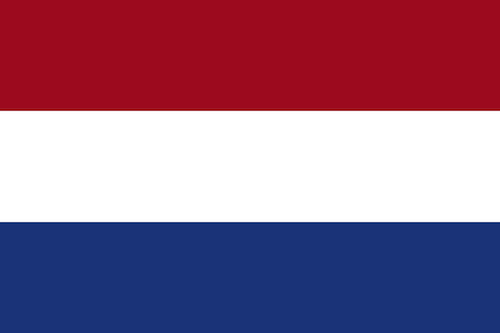Technology
To measure better is to know better. With Discharge Data As A Service (DAAS), water managers have access to high-quality and sustainable remote sensing technology that works with essential water data.
All components required for reliable discharge measurement are integrated in a compact plastic tube.
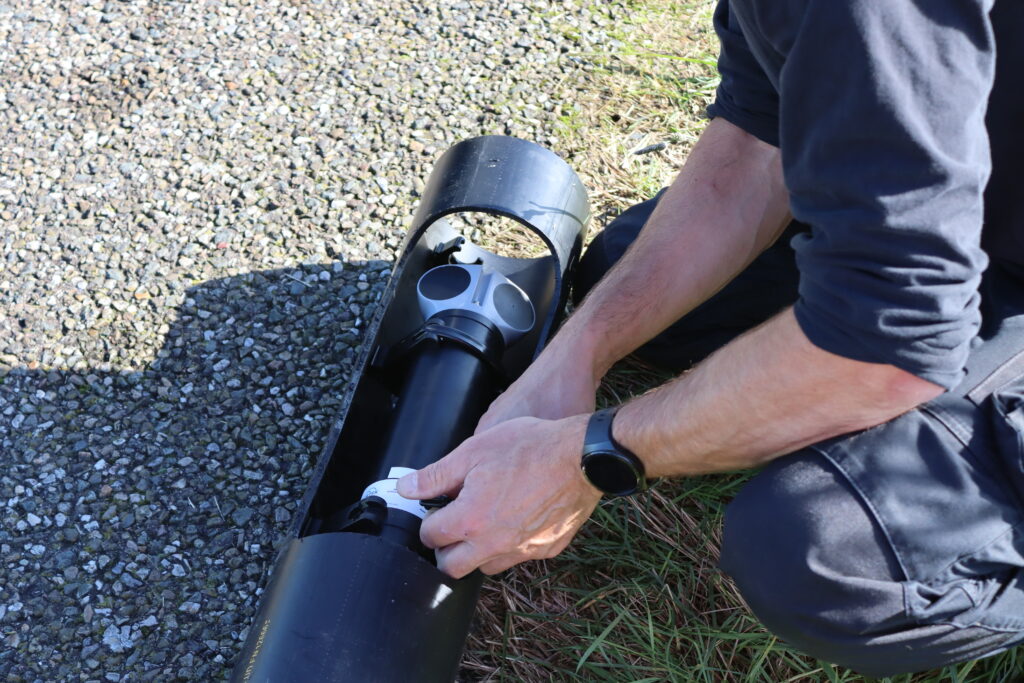
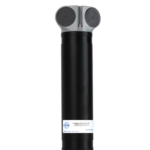
ADCP
The flow is measured with an Acoustic Doppler Current Profiler (ADCP) from Nortek AS. The instrument sends pulses through the water and determines the flow rate at various points in the waterway.
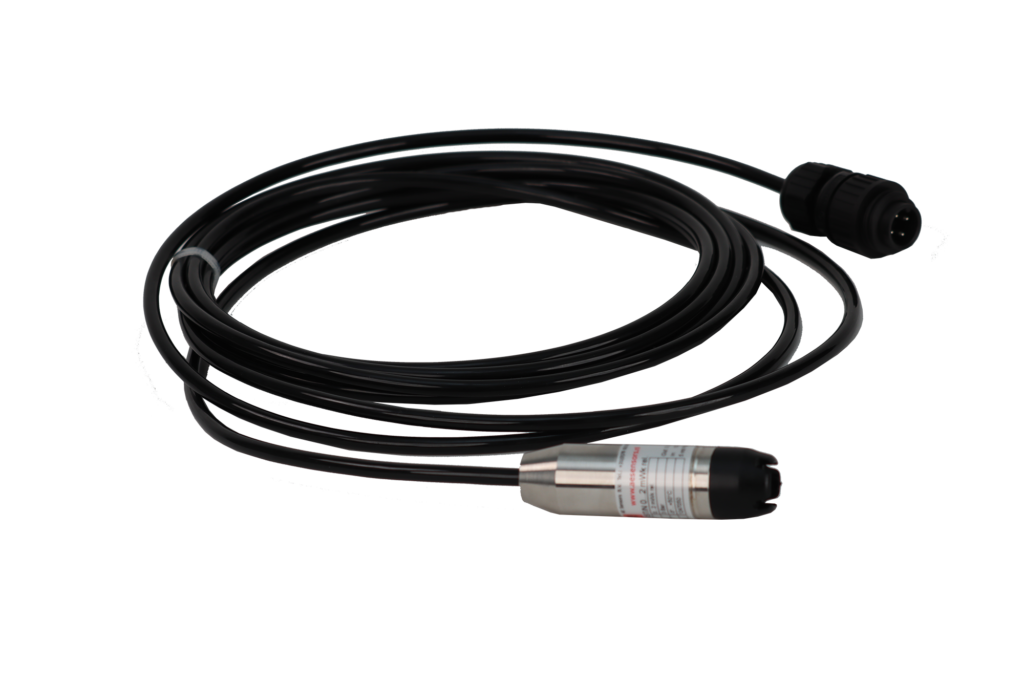
SENSOR
The water level is measured with a pressure sensor, which is mounted in the discharge station together with the ADCP. The measured water pressure is compensated for the local air pressure.
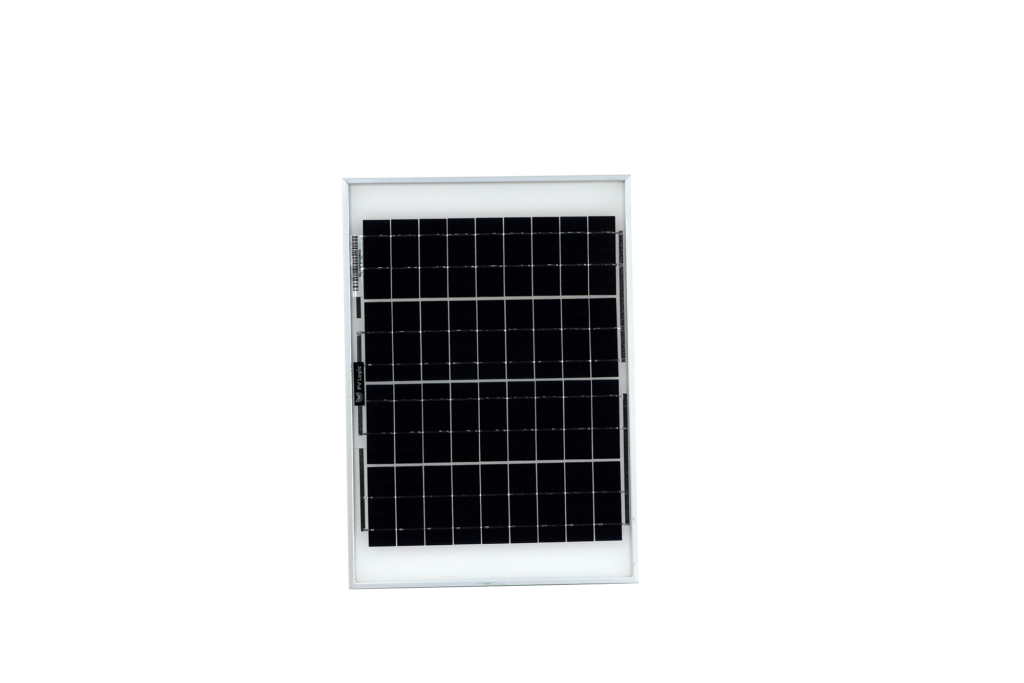
SOLAR
The discharge station is powered by an internal battery. This is charged by a solar panel at the top of the tube and is therefore 100 percent self-sufficient. No external cabling is required during the installation.
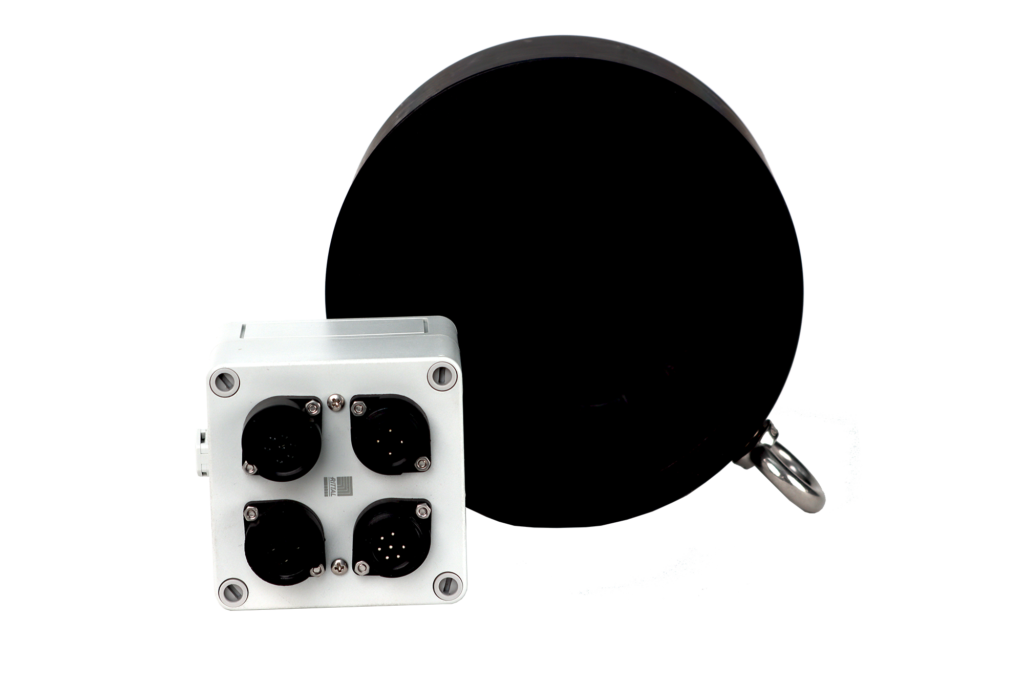
TELEMETRY
The data will be transferred with one or more Low Power Wide Area Network (LPWAN) techniques. The advantage of this technique is that range (distance to transmission tower) is large and energy consumption low.
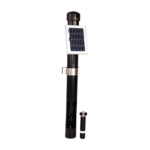
COMPACT
The discharge from this compact unit is calculated on a central server. Results can then be forwarded in various ways, or they can be made available on a personal dashboard that fits all of your data needs.
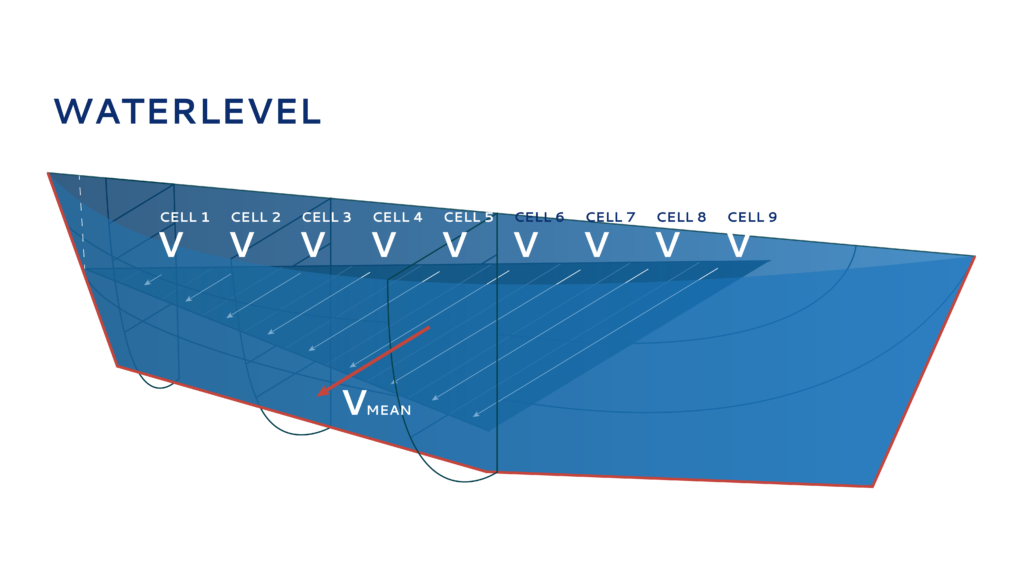
MEASURING DISCHARGE
Discharge is expressed as the number of liters that a waterway passes per unit of time. To calculate the discharge, the velocity and the flow area are determined at a fixed point in the waterway.
The current is measured with the Aquadopp Profiler – an Acoustic Doppler Current Profiler, also known as ADCP. The ADCP contains two transceivers that send a pulse into the water. The sound is concentrated in a narrow beam and is reflected by floating particles in the water, such as algae or fine sediment. The movement of the particles, off which this pulse reflects changes the sound. How much the sound changes depends on the speed of these particles. The change we observe as a result of this is called the Doppler effect.
The sensor receives the reflected sound and compares it with the initial condition. The difference is a measure of the speed of the particles and provides insight into the flow of the water.
Using digital signal processing, it is possible to measure the current at different distances from the sensor. The ADCP is a so-called two-dimensional (2D) sensor. Thanks to sensor technology, we can measure flow velocities on a horizontal surface. This surface is divided into a number of fixed sections, called “cells”. The sensor always determines the average flow rate in a cell.
WATER LEVEL AND DAAS
Does the river remain in the bed? Is there sufficient passage space for shipping?
Discharge measurements also provide valuable information about water levels. A special pressure sensor is integrated into each discharge station for this purpose.
Together, the shape and the water level of a waterway determine the flow area. The shape of a ditch, river or canal is regularly measured and then regarded as a fixed value.
The alternating water level is measured using a pressure sensor. This pressure sensor is mounted next to the Aquadopp Profiler. The pressure that this sensor registers allows us to determine the height of the water column.
The pressure sensor measures differential pressure. On one side there is water, on the other side a thin tube leads to the outside air. As a result, variation in air pressure has no influence on the altitude measurement.
DATA TRANSFER
Proven network techniques that guarantee an uninterrupted flow of discharge data are part of the station design.
Each discharge station contains a modem with which we upload the measurement data into the data network. In this case, so-called Low Power Wide Area Networks (LPWAN) are used. These data transport systems are based on radios that use very little energy. This makes it possible to equip the measuring stations with solar panels and thus make them practically self-sufficient.
By only sending the essential measurements and compressing them as efficiently as possible, a measurement can be transmitted every ten minutes. For channels and pumping stations, a higher data frequency – every minute – can be of interest. This is enabled by installing a larger solar panel, combined with LPWAN techniques.
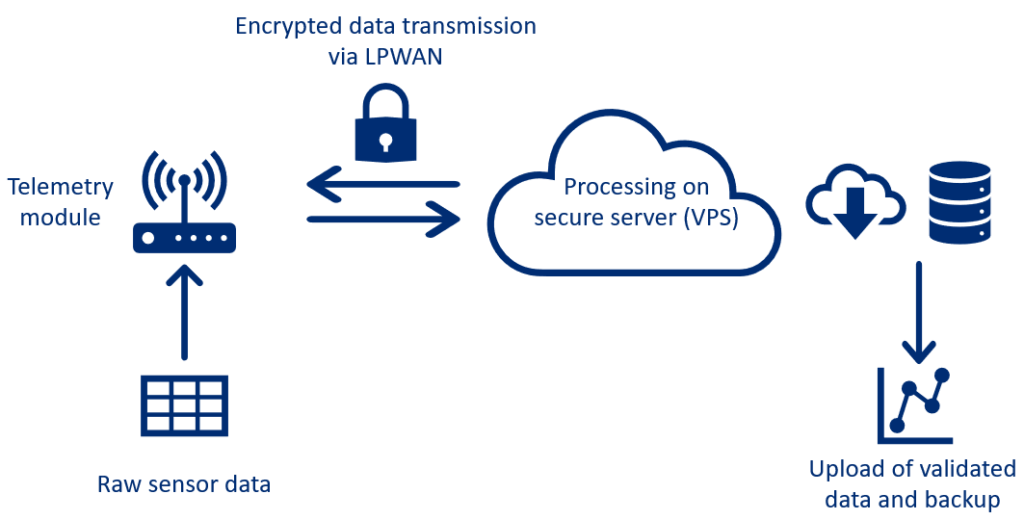
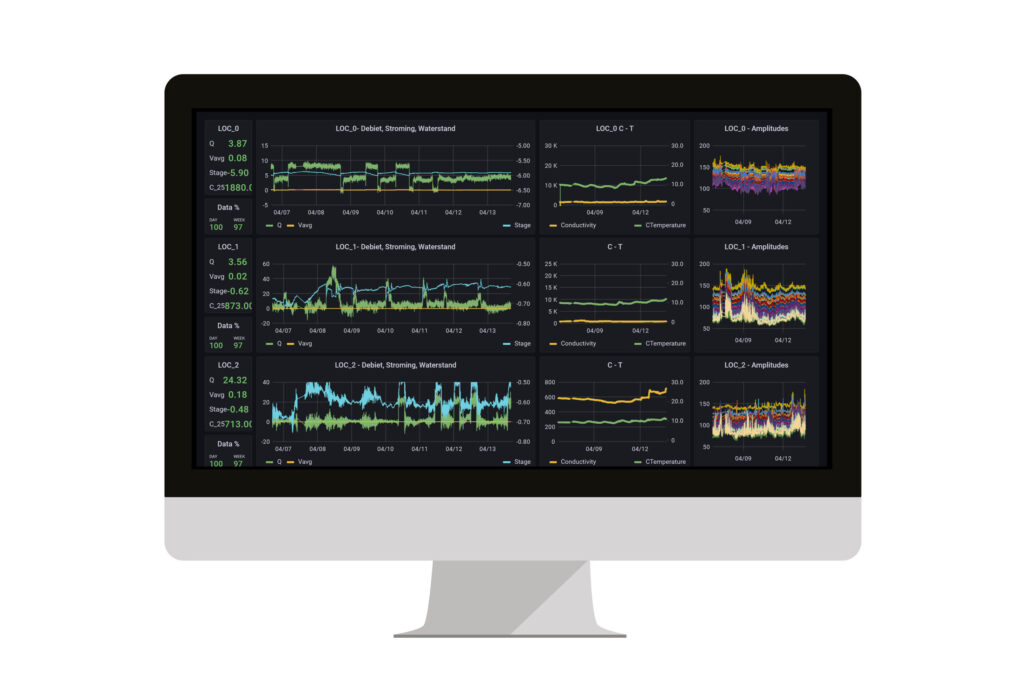
HOW DOES THE CUSTOMER RECEIVE THE DATA?
The measured data is sent to a central server (Virtual Private Server). Here, the discharge is calculated and the results are made available to the customer. Because all data from measuring stations is integrally processed via a server, it is easy to serve customers with different data types and formats.
To further increase the overview, it is possible to set up a personal discharge dashboard. This gives the customer an immediate graphical overview of measurements.
Permanent support is also available. River Insight offers remote monitoring: the ability to monitor systems 24/7, including a data validation service.

